Single-cell RNA sequencing reveals regulation of fetal ovary development in the monkey (Macaca fascicularis)
- PMID: 33372178
- PMCID: PMC7769980
- DOI: 10.1038/s41421-020-00219-0
Single-cell RNA sequencing reveals regulation of fetal ovary development in the monkey (Macaca fascicularis)
Abstract
Germ cells are vital for reproduction and heredity. However, the mechanisms underlying female germ cell development in primates, especially in late embryonic stages, remain elusive. Here, we performed single-cell RNA sequencing of 12,471 cells from whole fetal ovaries, and explored the communications between germ cells and niche cells. We depicted the two waves of oogenesis at single-cell resolution and demonstrated that progenitor theca cells exhibit similar characteristics to Leydig cells in fetal monkey ovaries. Notably, we found that ZGLP1 displays differentially expressed patterns between mouse and monkey, which is not overlapped with NANOG in monkey germ cells, suggesting its role in meiosis entry but not in activating oogenic program in primates. Furthermore, the majority of germ cell clusters that sharply express PRDM9 and SPO11 might undergo apoptosis after cyst breakdown, leading to germ cell attrition. Overall, our work provides new insights into the molecular and cellular basis of primate fetal ovary development at single-cell resolution.
Conflict of interest statement
The authors declare that they have no conflict of interest.
Figures

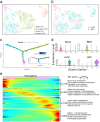
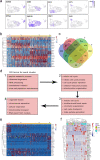
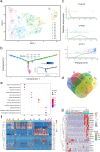
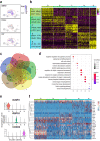
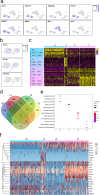
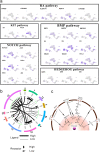
Similar articles
-
ZGLP1 is a determinant for the oogenic fate in mice.Science. 2020 Mar 6;367(6482):eaaw4115. doi: 10.1126/science.aaw4115. Epub 2020 Feb 13. Science. 2020. PMID: 32054698
-
No evidence for neo-oogenesis may link to ovarian senescence in adult monkey.Stem Cells. 2013 Nov;31(11):2538-50. doi: 10.1002/stem.1480. Stem Cells. 2013. PMID: 23897655
-
Ex vivo reconstitution of fetal oocyte development in humans and cynomolgus monkeys.EMBO J. 2022 Sep 15;41(18):e110815. doi: 10.15252/embj.2022110815. Epub 2022 Aug 1. EMBO J. 2022. PMID: 35912849 Free PMC article.
-
Embryonic stem cell lines of nonhuman primates.ScientificWorldJournal. 2002 Jun 26;2:1762-73. doi: 10.1100/tsw.2002.829. ScientificWorldJournal. 2002. PMID: 12806169 Free PMC article. Review.
-
Germ Cell Commitment to Oogenic Versus Spermatogenic Pathway: The Role of Retinoic Acid.Results Probl Cell Differ. 2016;58:135-66. doi: 10.1007/978-3-319-31973-5_6. Results Probl Cell Differ. 2016. PMID: 27300178 Review.
Cited by
-
Dynamic changes in cellular atlases and communication patterns within yak ovaries across diverse reproductive states unveiled by single-cell analysis.Front Cell Dev Biol. 2024 Aug 29;12:1444706. doi: 10.3389/fcell.2024.1444706. eCollection 2024. Front Cell Dev Biol. 2024. PMID: 39268087 Free PMC article.
-
Unveiling the Ovarian Cell Characteristics and Molecular Mechanism of Prolificacy in Goats via Single-Nucleus Transcriptomics Data Analysis.Curr Issues Mol Biol. 2024 Mar 11;46(3):2301-2319. doi: 10.3390/cimb46030147. Curr Issues Mol Biol. 2024. PMID: 38534763 Free PMC article.
-
Roles of immune microenvironment in the female reproductive maintenance and regulation: novel insights into the crosstalk of immune cells.Front Immunol. 2023 Dec 28;14:1109122. doi: 10.3389/fimmu.2023.1109122. eCollection 2023. Front Immunol. 2023. PMID: 38223507 Free PMC article. Review.
-
The Application of Single-Cell RNA Sequencing in Mammalian Meiosis Studies.Front Cell Dev Biol. 2021 Aug 18;9:673642. doi: 10.3389/fcell.2021.673642. eCollection 2021. Front Cell Dev Biol. 2021. PMID: 34485276 Free PMC article. Review.
-
Single-cell roadmap of human gonadal development.Nature. 2022 Jul;607(7919):540-547. doi: 10.1038/s41586-022-04918-4. Epub 2022 Jul 6. Nature. 2022. PMID: 35794482 Free PMC article.
References
-
- Stévant, I. et al. Single-cell transcriptomics of the mouse gonadal soma reveals the establishment of sexual dimorphism in distinct cell lineages. https://www.biorxiv.org/content/10.1101/410407v1.full (2018). - DOI
Grants and funding
LinkOut - more resources
Full Text Sources
Molecular Biology Databases
Research Materials

